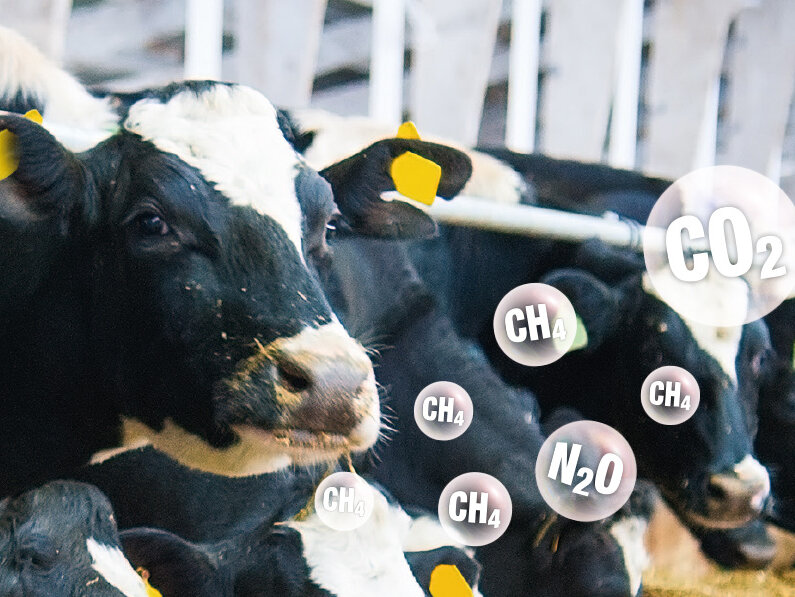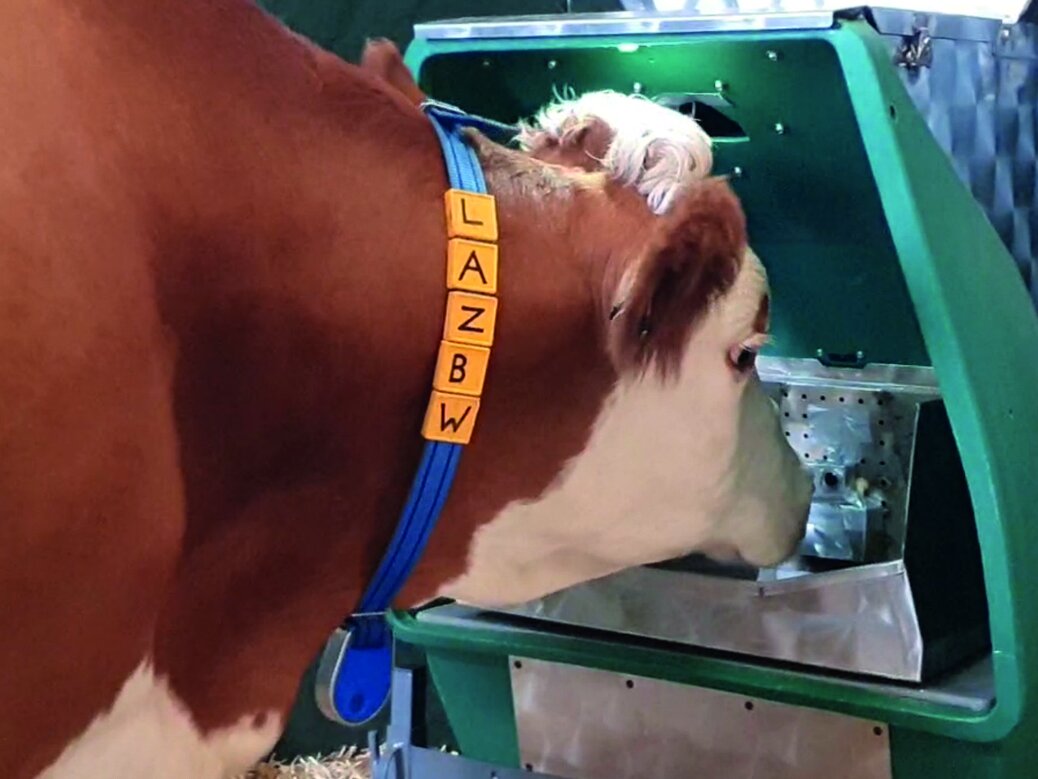Methane in dairy cows
DLG Working Group Feed and Feeding publishes DLG Expert Knowledge Series 491 (in German language) - Methane detection in the context of milk performance and milk quality testing and for use as a benchmark
In addition to reducing carbon dioxide emissions, the societal goal of combating climate change is increasingly focused on reducing emissions of other climate-impacting gases. One of these other so-called "greenhouse gases" is methane, which is produced in large quantities when ruminants digest their feed and when cow dung and manure are spread on the field as natural fertilizer and decompose. However, analyses of practical data show a very wide range of CO2 equivalents per cow and per kg of milk or milk and meat, making comparisons and targeted improvements in this area difficult. In its recently published paper Expert Knowledge 491 (German language), the DLG Working Group on Feed and Feeding has dealt with the principles and correlations as well as the specifications for measuring and evaluating the CO2 equivalents caused by methane and summarised them in a practical way.
In order to capture and use as many approaches as possible to reduce greenhouse gas emissions in the areas of on-farm feed management, feeding and herd management, the factsheet recommends the use of a benchmark formula. In addition, the use of mid-infrared (MIR) spectra in standard milk analysis has been identified as a measurement method was identified that can also be used to additionally estimate the CH4 emissions from milking cows. This makes it possible, and above all practical, to assess the specific climate impact of a dairy farm and, in particular, to compare how one's own farm compares with other farms of similar structure and with the benchmark line. In addition, this system provides reliable comparisons of the measurement results from measurement date to measurement date thanks to its high degree of standardisation and can be used quickly and cost-effectively for routine assessment. Calibration can be carried out continuously on the basis of test data for methane measurement with the GreenFeed system.
It should also be noted that cows vary greatly in terms of meat yield, so that when referring to milk, a comparison should always be made within the breed, e.g. Deutsch Holstein, Fleckvieh, Brown Swiss (Braunvieh). If there are deviations of more than 20 - 30 g per cow and day or 1 g CH4 per kg of milk from measurement date to measurement date or from regional mean values, the design of the feed and the feed efficiency should be reviewed and adjusted if necessary.
The decisive factor is the climate impact of the farm, taking into account the needs of humans and animals.
The DLG Working Group on Feed and Feeding is the working platform for the development of generally applicable recommendations on feed and feeding in Germany. This takes place in an intensive professional exchange between the participants from science, consultancy, analysis and industry.
For further information, please contact Dr. Detlef Kampf at the DLG Competence Center for Agriculture on +49 69/24788-320 or by e-mail at: d.kampf@dlg.org
Dr. Detlef Kampf
Competence Center Agriculture
Department Manager Animal Nutrition


